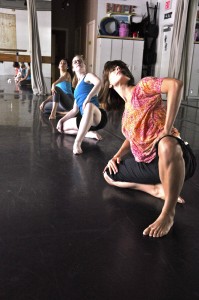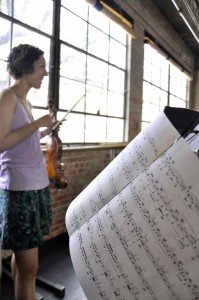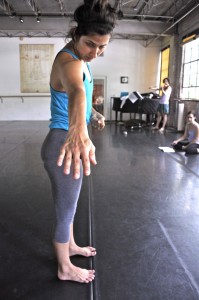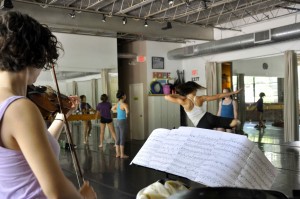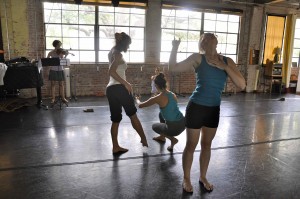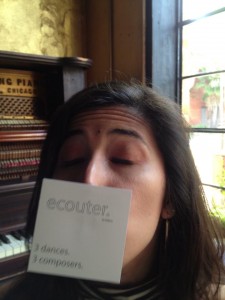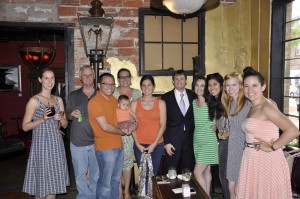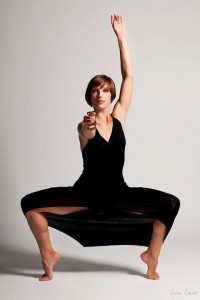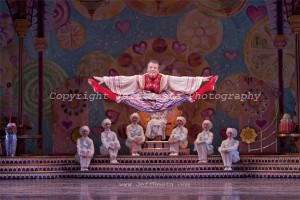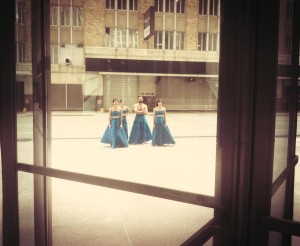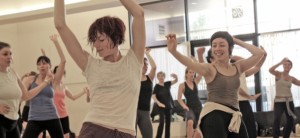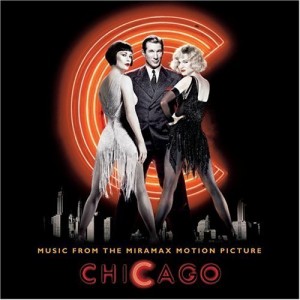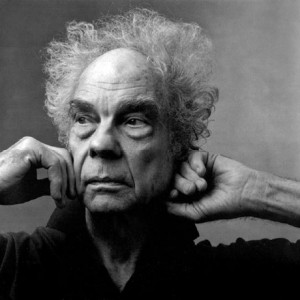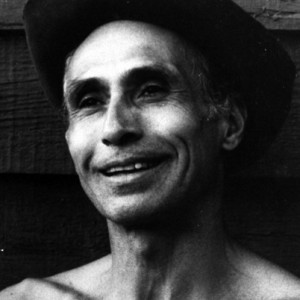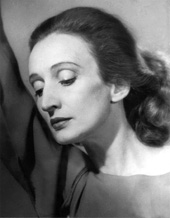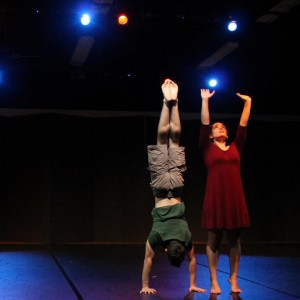Happy Thursday!
One more day to the weekend, but more importantly ONE MORE DAY UNTIL ECOUTER OPENS!
Get your tickets here, still only $15 until tomorrow!
In case you’re not caught up with Frame’s newest weekly series, Thesis Thursday, you can catch up on the last three blog posts here. In a nutshell, this series features installments of my senior thesis written for Rice University’s Center for the Study of Women, Gender and Sexuality. It explores the topics of Contact Improvisation, Feminism, feminist performance art, and female empowerment through movement.
Here’s a re-cap of my general thesis statement:
I will argue that CI is a complex feminist practice. The relationship CI has to feminism is complex because it is not inherently feminist, but enables women to have a feminist experience.
If you don’t have time to catch up on the first two posts, have no fear! It’s a perfect week to dive in! In this post, I will explore the relationship between CI’s history and postmodern art of the 1950’s-60’s. Enjoy!
——————
Chapter I. Part II. CI and Postmodernist Influences
The Living Theatre opened in 1947 and is the longest standing experimental theatre group in the U.S. “Over the course of almost fifty years, The Living Theatre has been known as the most radical, uncompromising, and experimental group in American Theatrical history.”[1] It pulled Steve Paxton (see past posts for more info on Paxton, who is hailed as the originator of CI) into its vortex of action and awakened his political consciousness. The theatre is known for the radical politics of its founders’, Judith Malina and Julian Beck, specifically their commitment to nonviolence, anti-hierarchy and anti-commercialism of art. Their politics manifested in a unique theatre experience that transcended the specific medium such as film, painting, or dance, and aimed to engage the audience by dissolving the “fourth wall,” which separates audiences from the stage, and exposing them to what Antonin Artaud theorized as the “theatre of cruelty.” Artaud was a French playwright and actor prolific in the early 1900’s in Europe.[2] He is widely known for his writings regarding the theatre of cruelty, which was a stark portrayal of reality meant to propel the audience from passive complacency to thoughtful action. According to theatre critic Albert Bermel, Artaud believed that, “If theatre is a necessary part of our lives…[i]t has an obligation: it’s every performance must, by virtue of its cleansing and purifying, transfigure those audiences.”[3] One example of such theatre is Jack Gelber’s play, The Connection, which featured actors already on stage as the audience entered the theatre. The actors are waiting for their heroin dealers and walk through the aisles asking for money to get a fix during intermission.[4] In the words of Julian Beck:
To call into question
who we are to each other in the social environment of theater…
to set ourselves in motion
like a vortex that pulls the
spectator into action…
to move from the theater to the street and from the street to the
theater.
This is what The Living Theatre does today.
It is what it has always done[5]
Robert Dunn’s composition (choreography) classes taught at Merce Cunningham’s studio in The Living Theatre from 1960 – 1962 were the impetus for the development of the Judson Dance Theatre two years later.[6] Dunn’s first composition class started with only Paxton and four other students. Paxton worked with Dunn for the next four years, and Paxton was forced to challenge the conventions of his modern dance training. Paxton says of the experience:
The work that I did there was first of all to flush out all of my “why-nots,” to go through my “why not” circles as far as I could until getting bored with the question…It was a very permissive time…which was my first contact with the rise of political consciousness – where I first saw a peace symbol, where I first saw dope smoked, where they were doing plays like The Connection and talking about prison reform.[7]
Yvonne Rainer, a fellow dancer in Dunn’s choreography class at The Living Theatre recalls a piece by Paxton in which he sat on a bench and ate a sandwich.[8] This piece was minimalist and its rejection of modern dance conventions and refined technical vocabulary was groundbreaking for the time period. It demonstrated anti-commercialism and criticized over-the-top entertainment. Dunn’s classes led to Paxton and his classmates creating many diverse dance scores. Eventually the classmates decided to present their collection of work as the Judson Dance Theatre (JDT), in the Judson Memorial Church in Greenwich Village, New York City on July 6, 1962. So began the Judson Dance Theatre’s twenty-year domination of the postmodern dance scene. According to dance scholar Sally Banes, “It was the seedbed for post-modern dance…The choreographers of the Judson Dance Theatre radically questioned dance aesthetics…”[9] The JDT is widely regarded as the first organized instance of postmodern dance. It defined postmodern dance as a reaction to modern dance that rejected many of modern dance’s technical constraints. The result was an embrace of everyday movement. The techniques of musicians who used non-traditional instruments, chance composition and improvisation complemented this new type of performance. These elements would be seen later in Contact Improvisation, which also utilizes improvisational musicians to create a musical score in jams and performances.
The group’s success was partly due to the egalitarian and democratic nature of the organization. Judith Dunn, a dancer in the first concert and wife of Robert Dunn, wrote, “No important decisions were made until everyone concerned and present agreed.”[10] Again, this lesson, taught by Cunningham and Limón, was not lost on Paxton as evidenced by the anti-hierarchical, cooperative and egalitarian organization in his own movement form and practice. However, the JDT pushed Paxton outside the technical and apolitical style of modern dance and exposed him to postmodern experimentation with the mundane and pedestrian as a form of political critique which I will argue set the stage for a feminist experience to develop.
[1] John Tytell, The Living Theatre: Art, Exile, and Outrage, (New York: Grove Press, 1995), xi.
[2] Albert Bermel, Artuad’s Theatre of Cruelty, (London: Methuen, 2001), vii-viii, 115.
[3] Ibid., 11.
[4] Jack Gelber, The connection, a play (New York: Grove Press, 1960).
[5] Julian Beck, “Our Mission,” The Living Theatre, http://www.livingtheatre.org/about/ history (accessed December 17, 2012).
[6] Banes, Democracy’s Body: Judson Dance Theatre, 2.
[7] Ibid., 9-10.
[8] Ibid., 9.
[9] Banes, Democracy’s Body: Judson Dance Theatre, xi.
[10] Sarah Doran, “The Judson Dance Theater,” Greenwich Village, http://terpconnect.umd.edu/~molouns/amst450/village/judson.html (accessed November 8, 2012).


